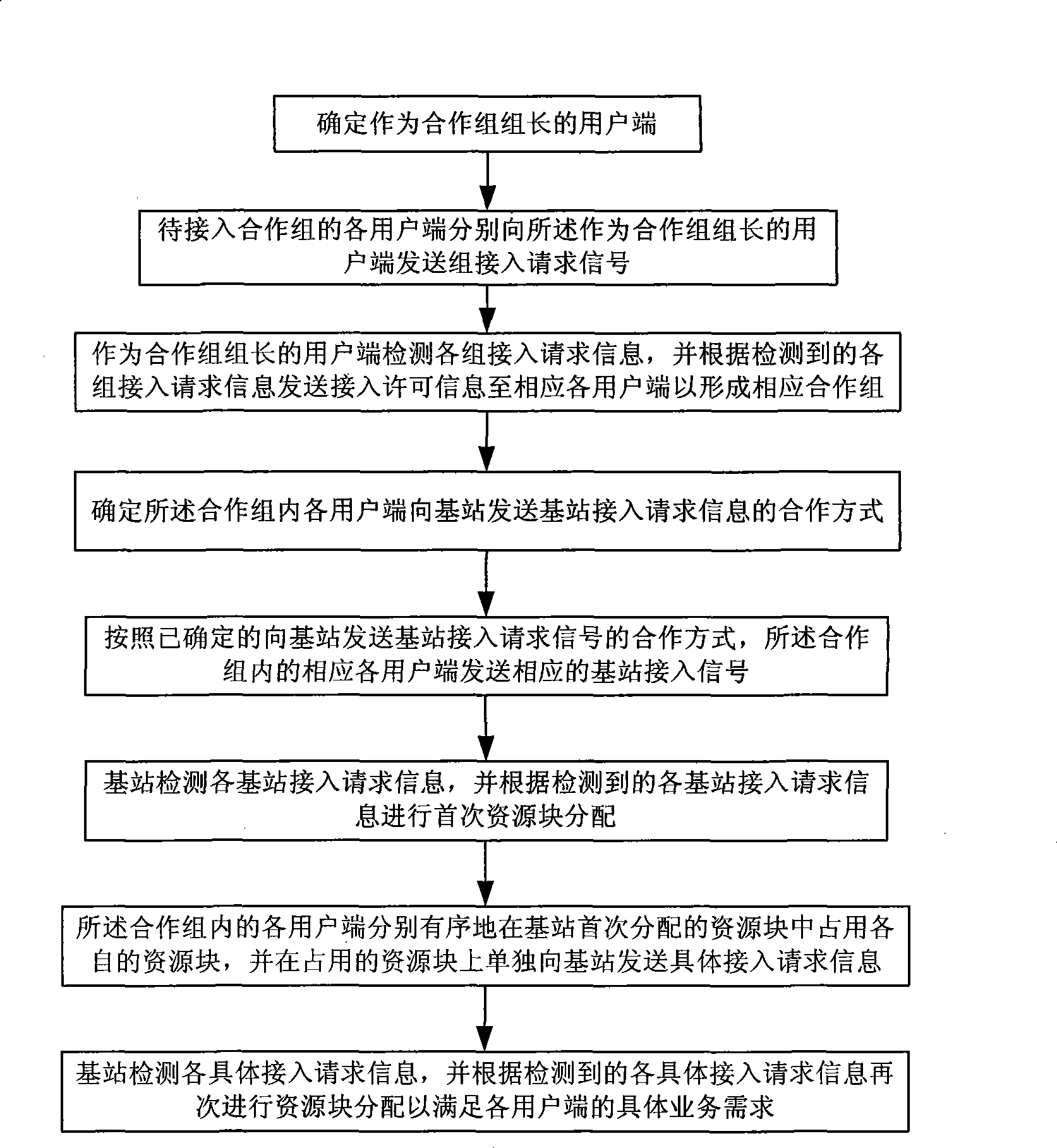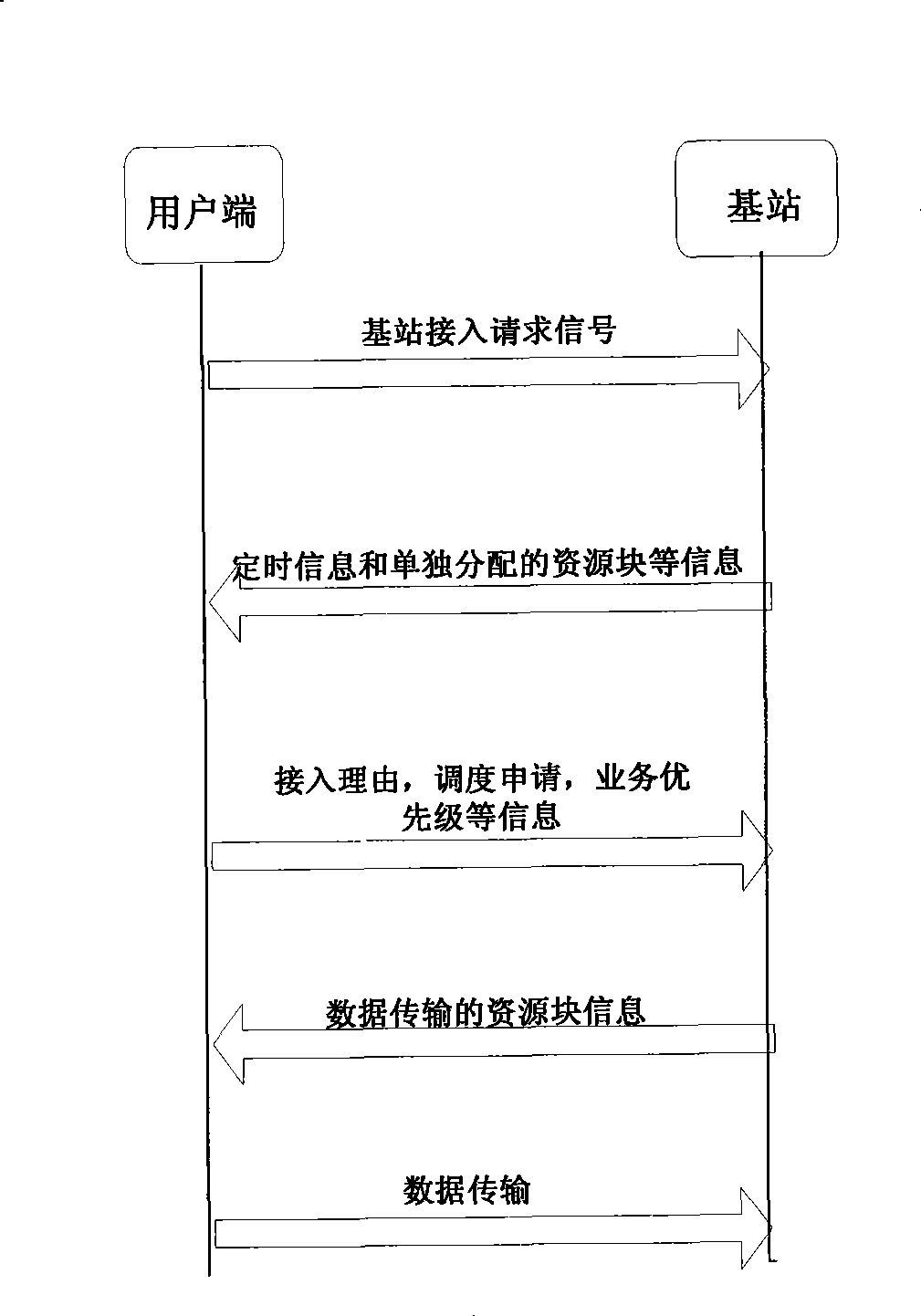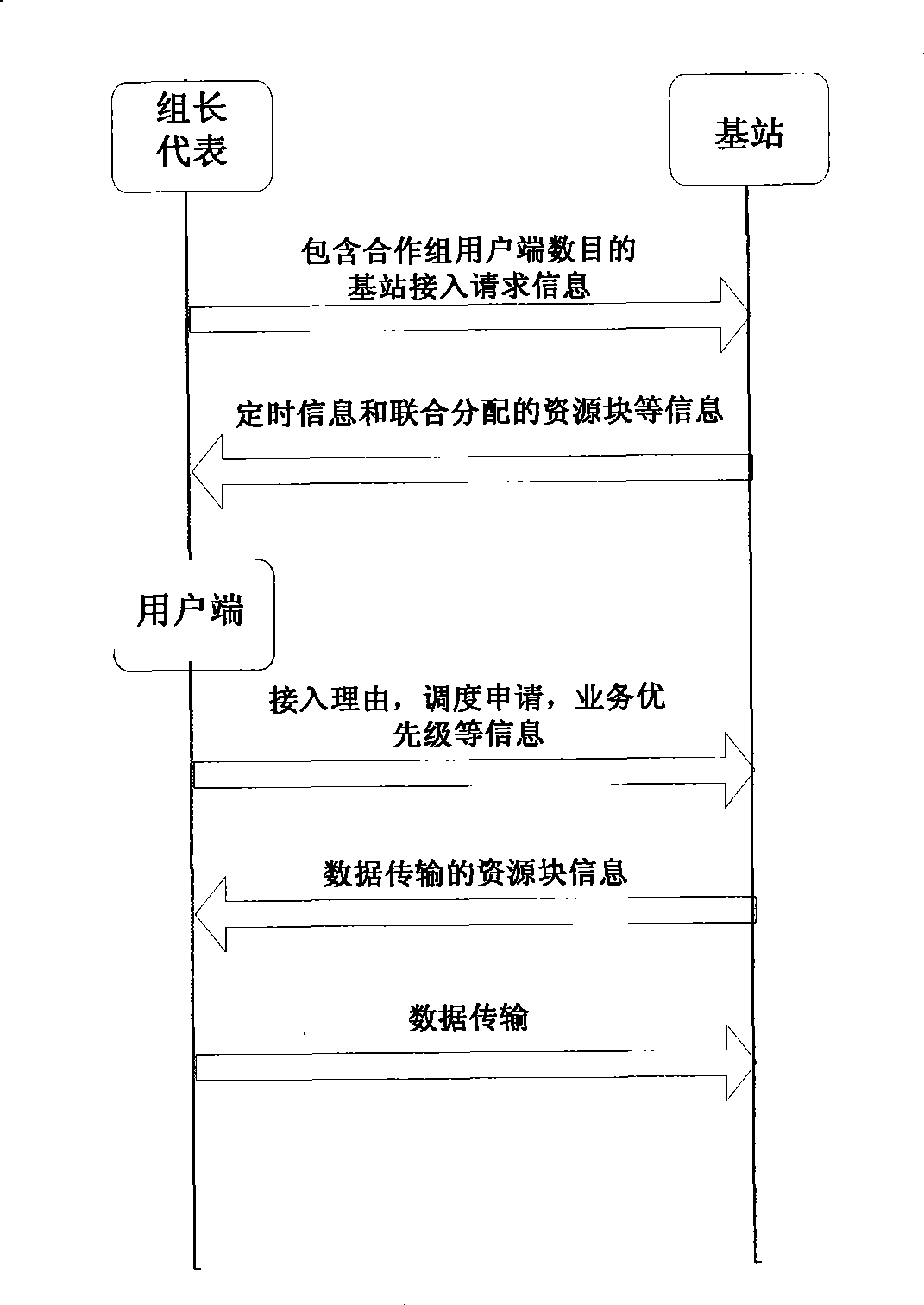Stochastic access method based on user side cooperative grouping in collaboration cellular network
A cellular network, random access technology, applied in advanced technology, sustainable building, sustainable communication technology, etc., can solve the problems of user-end signal collision, reduce user-end conflict, and the number of colliding users is difficult to detect correctly, etc. Achieve the effect of avoiding collision, reducing the probability of collision and saving energy consumption
- Summary
- Abstract
- Description
- Claims
- Application Information
AI Technical Summary
Problems solved by technology
Method used
Image
Examples
Embodiment Construction
[0018] see figure 1 , the random access method based on the cooperative grouping of the client in the cooperative cellular network of the present invention mainly includes the steps:
[0019] Step 1: Determine the user terminal as the leader of the cooperation group. For example, the user terminal as the leader of the cooperation group can be determined by the base station assignment method. In addition, the user terminal as the leader of the cooperation group can also be determined by self-designation, that is, When a user terminal does not receive the corresponding feedback information of accepting into the group after sending out the group access request information, it designates itself as the leader of the cooperation group.
[0020] Step 2: each client to be connected to the cooperation group sends group access request information to the client as the leader of the cooperation group respectively, and each client to be connected to the cooperation group can adopt a random...
PUM
 Login to View More
Login to View More Abstract
Description
Claims
Application Information
 Login to View More
Login to View More - R&D
- Intellectual Property
- Life Sciences
- Materials
- Tech Scout
- Unparalleled Data Quality
- Higher Quality Content
- 60% Fewer Hallucinations
Browse by: Latest US Patents, China's latest patents, Technical Efficacy Thesaurus, Application Domain, Technology Topic, Popular Technical Reports.
© 2025 PatSnap. All rights reserved.Legal|Privacy policy|Modern Slavery Act Transparency Statement|Sitemap|About US| Contact US: help@patsnap.com



